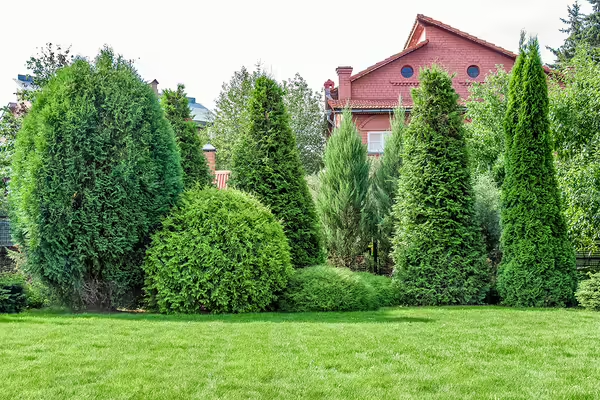
URBANA, Ill. — Windbreaks are utilized as critical components of agriculture worldwide and have been for centuries. Traditionally, windbreaks are linear plantings layered with trees and shrubs primarily designed to reduce wind speeds. Also known as shelterbelts, windbreaks have the potential to provide additional benefits of creating wildlife habitat, improved biodiversity, soil protection, energy savings, shade, visual screening, and more.
Historical planting efforts
In the Midwest, shelterbelts hold ecological and historical significance. In 1934, at the height of the Dust Bowl, President Franklin D. Roosevelt included in the New Deal resources to strategically plant windbreaks on farms where the reduced wind speeds would also reduce the severe soil erosion and dust storms of the era. The Civilian Conservation Corps and Works Progress Administration planted over three billion trees and established state nurseries. To this day, many of these projects remain, although many need restoration or rejuvenation.
Functioning windbreaks reduce wind speeds by intercepting air flow and causing a change in velocity. Loose plant material interrupts the wind pattern and diverts the air over, around, and through the plant material to lower speeds. Orientation, plant height, planting length, and continuity affect a windbreak's efficacy. The most effective windbreaks are planted perpendicular to prevailing winds. Plant height greatly influences how much impact a windbreak will have and is used to predict how far downwind the effect will be felt. The length of a planting determines how much land the trees will protect, and having a continuous windbreak will minimize the risk of wind tunnels.
Planting by design
The optimal windbreak design includes multiple rows of plant material of various species. For example, two or three rows of conifers on the windward side, a few rows of deciduous trees on the interior, and a few rows of shrubs on the leeward side. Windbreaks planted with a mix of species are better able to withstand pest and disease pressure over time. Traditionally, in graphics and illustrations, windbreaks are represented as straight-row plantings along the edge of a property. It is common to see them in this form throughout the Midwestern landscape. However, groups of trees in any configuration or size can provide protection and windbreak benefits.
Urban windbreaks
The previous style of windbreak described is reminiscent of those found on rural farmsteads, but urban environments can also benefit from a windbreak. Communities that prioritize and manage an urban forest will experience reduced wind speeds. Conifers are the most impactful windbreak species, but a dense canopy of deciduous trees will also interrupt wind speeds. Managing an urban forest includes planting tree species that will reach large mature sizes, providing adequate space and protection for trees to grow larger over time, and funding and implementing a maintenance program that will promote tree health and vigor. The cumulative impact of trees in an urban forest can act as a windbreak to help reduce winter windchill while providing summer shade, helping manage stormwater, producing clean air, and creating more livable cities.
Planting
Planting a new windbreak or rejuvenating an established one requires advanced planning. Consider these tips when planning a windbreak turns to planting.
If incorporating evergreen species into a planting plan, spring is the optimal time to plant. Evergreens retain their leaves throughout the winter, making them more susceptible to winter injury. Planting trees in spring allows newly planted specimens to establish root systems supporting evergreens through the following winter season. Early spring, as soon as the ground is thawed but not muddy, is the best time to plant conifers to maximize the growing season duration.
All newly planted trees require care during establishment. Tree care includes:
- Mulching around the base of the trees.
- Providing supplemental water when rainfall is inadequate.
- Protecting young trees from insects, disease, and animal damage.
For more on planning and planting a windbreak, connect with a location Extension office at go.illinois.edu/ExtensionOffice.
Emily Swihart is an Illinois Extension horticulture educator for Henry, Mercer, Rock Island, and Stark counties. Gardeners Corner is a quarterly newsletter from gardening experts around the state. Each issue highlights best practices that will make your houseplants, landscape, or garden shine in any season. Join the Gardener’s Corner email list at go.illinois.edu/GCsubscribe for direct access to timely tips.
Photo Caption: Windbreaks have the potential to provide additional benefits of creating wildlife habitat, improved biodiversity, soil protection, energy savings, shade, visual screening, and more. Photo: Adobe Stock
Illinois Extension leads public outreach for University of Illinois by translating research into action plans that allow Illinois families, businesses, and community leaders to solve problems, make informed decisions, and adapt to changes and opportunities. Illinois Extension is part of the University of Illinois Urbana-Champaign College of Agricultural, Consumer and Environmental Sciences.